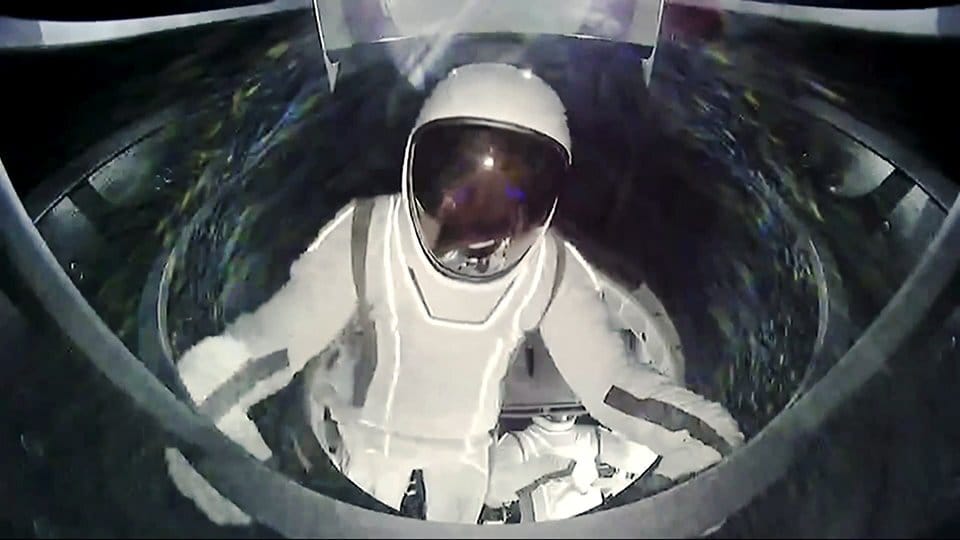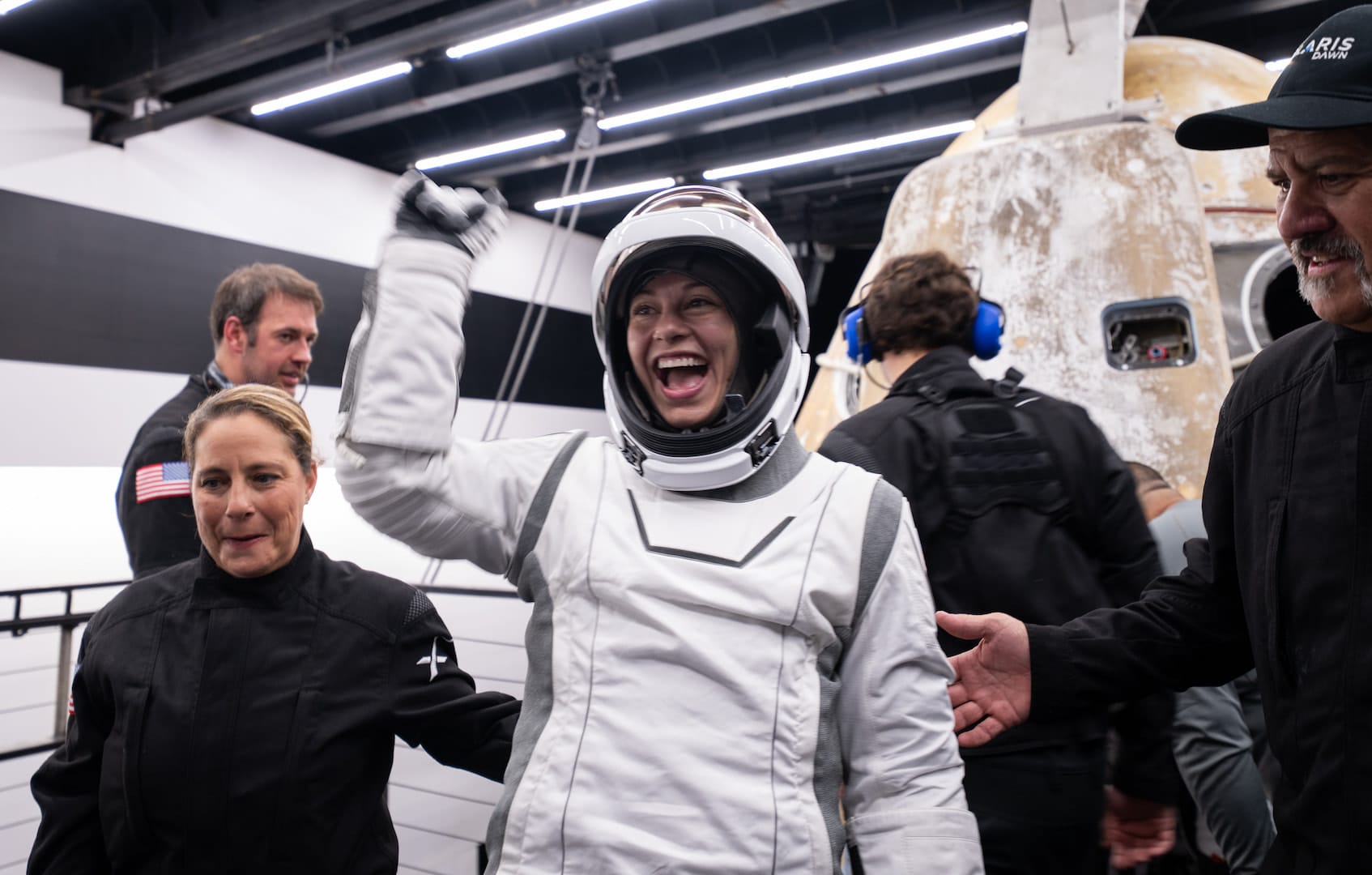
👩🚀 First private spacewalk conducted by SpaceX
SpaceX Polaris Dawn mission performed the first ever commercial spacewalk. The crew reached an altitude of nearly 1400 km, higher than any other manned spaceflight since the Apollo program. The mission tested new SpaceX equipment and conducted 36 scientific experiments.
Share this story!
- SpaceX Polaris Dawn mission performed the first ever commercial spacewalk.
- The crew reached an altitude of nearly 1400 km, higher than any other manned spaceflight since the Apollo program.
- The mission tested new SpaceX equipment and conducted 36 scientific experiments.
Historic spacewalk
On September 12, the SpaceX Polaris Dawn crew conducted the first ever commercial spacewalk. The mission, which lasted five days, reached an altitude of 1400 km - higher than any other manned spaceflight since the Apollo program half a century ago.
The spacewalk took place on the third day of the mission. The crew's Dragon Resilience capsule was lowered to an altitude of 737 km before the walk was performed. Mission commander Jared Isaacman was the first out, followed shortly after by SpaceX engineer Sarah Gillis.

The spacewalk lasted a total of one hour and 46 minutes. During this time, both Isaacman and Gillis performed a series of mobility tests of the spacesuits while SpaceX captured spectacular live images of the two astronauts standing outside the spacecraft.
New technology tested
The Polaris Dawn crew wore new spacesuits designed by SpaceX. The suits are designed to be light and flexible while protecting against the harsh environment in Earth orbit. A SpaceX engineer described the suit as "armor made of fabric".
The spacewalk was also made possible by a specially designed hatch called "Skywalker" that replaced Dragon's usual docking port for the ISS. The Skywalker hatch has a ladder as well as handholds and footrests for the astronauts to hold onto when maneuvering outside the Dragon capsule.
The mission also tested a new communication system that uses lasers to connect to SpaceX Starlink satellites. The system has the potential to open up an entirely new communication pathway for spacecraft, satellites and telescopes.
Scientific experiments
In addition to testing new SpaceX equipment, the four astronauts conducted 36 different scientific experiments from 31 separate institutions. The experiments ran throughout the mission and some of them contribute data to NASA's Human Research Program to increase understanding of how the human body reacts to spaceflight.
The experiments included testing of body-worn devices that collect biometric data, attempts to counteract motion sickness, and tests of eye health in microgravity. Polaris Dawn also traveled through parts of Earth's Van Allen radiation belt, providing an opportunity to better understand how this radiation affects the human body.
Mission background
Polaris Dawn is the second private SpaceX mission funded by Jared Isaacman. The first, Inspiration4, was conducted in September 2021 and was the first manned orbital mission that did not include any professional astronauts.
Both Inspiration4 and Polaris Dawn raised money for St. Jude Children's Research Hospital in Memphis, Tennessee. Inspiration4 raised a total of 250 million dollars for St. Jude.

The Polaris Dawn mission successfully concluded on September 15 when the spacecraft safely landed in the Gulf of Mexico off the coast of Florida at 09:36 Swedish time. The reentry into the atmosphere was observed by astronauts aboard the International Space Station ISS, who described it as a spectacular sight.
All images from SpaceX.
By becoming a premium supporter, you help in the creation and sharing of fact-based optimistic news all over the world.


